Social Media Helps to Take a Jewel Out of The Dark
An effective campaign contributed the beloved Caracas Children’s Museum to reopen its doors right on time for Children’s Day after 350 meters of cable were stolen from its facilities


Photos: Iván Reyes
On Sunday 14th, El museo de los niños – Children’s Museum- opened its doors but its lights weren’t turned on. 350 meter of electricity high tension cables had been stolen from the facilities of Parque Central, leaving one of the most important cultural, technological and pedagogical spaces of Caracas in the dark for the first time since 1982. Corpoelec, the provider of the electric system, didn’t comply for 6 days on making the restoration, even though it consisted in a day’s work for its completion. It was unthinkable for the museum’s administration to restore the electric system, valued in over $15,000, on its own.
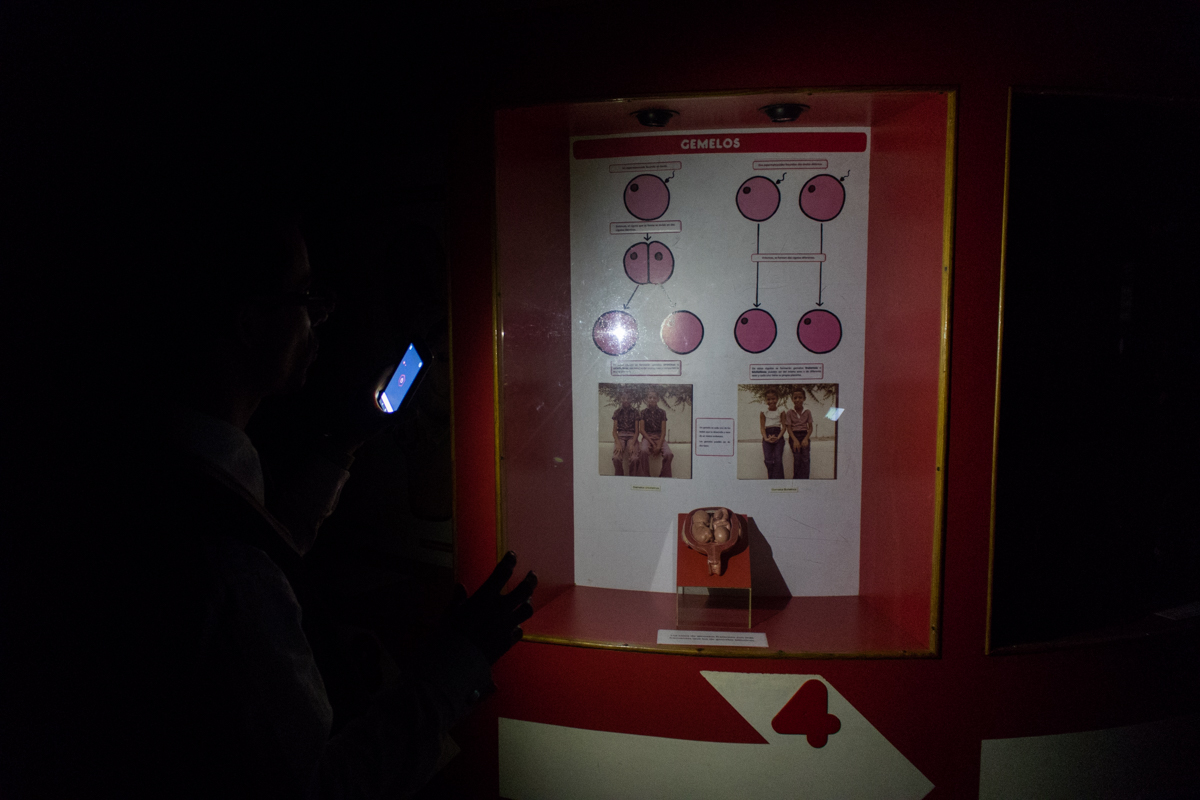
Darwin Sánchez makes a tour of the darkened museum. Caracas, 2019. Photo: Iván Reyes.
“The Children’s Museum is a fundamental space for children in Venezuela. We are forced to close our doors right before Children’s day and at the beginning of summer holidays.” says Mireya Caldera Pietri, the museum director who has dedicated her career to interactive teaching and sociological and scientific pedagogical methodology. “This is a catastrophe, as this is a non-profit private center, unlike any other Venezuelan museum. Our income depends on tickets sale, and the survival of the museum can’t be guaranteed when our doors are closed during its most important season.”
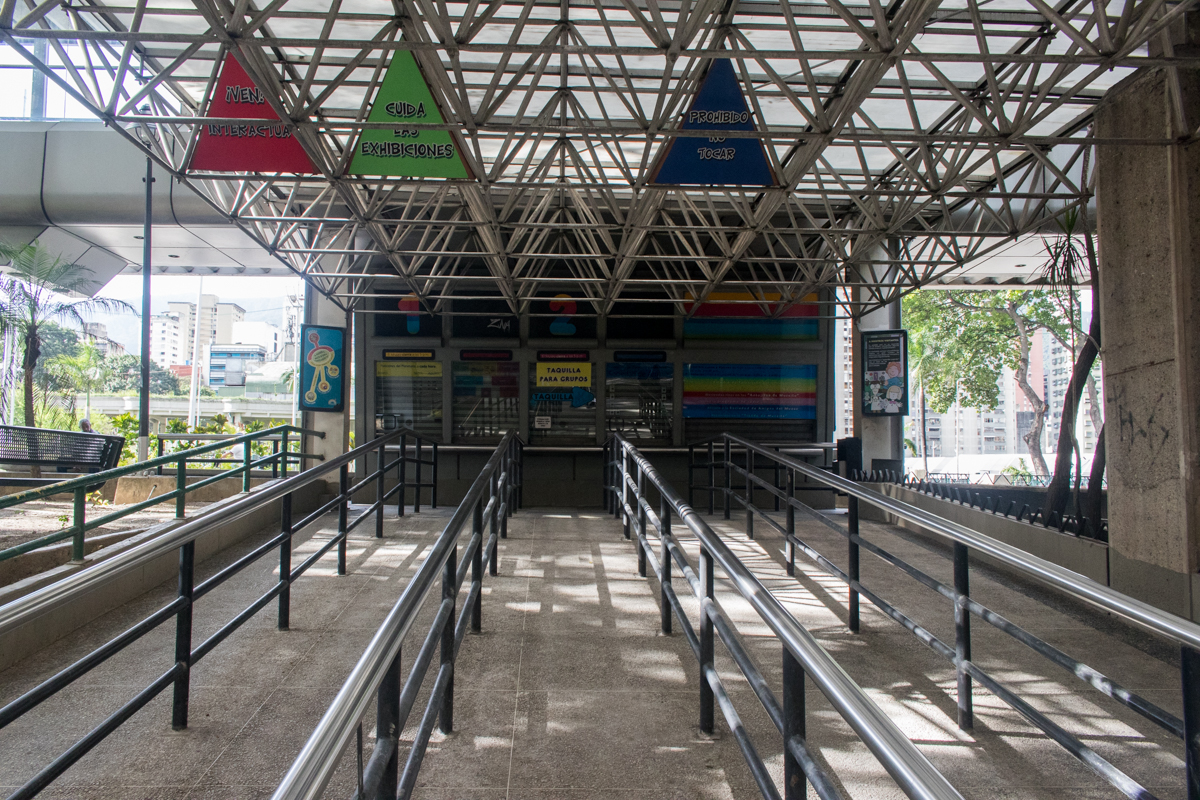
While the Space Conquest wing remained open for visitors during the electrical failure, instalations and ticket offices had to close down due to lack of point of sale. “Hyperinflation has made it impossibe to pay the ticket’s worth -about 2$- in cash” says Darwin Sánchez. Caracas, 2019. Photo: Iván Reyes.
As soon as this was known, social media was flooded with protest messages under the hashtag #LuzParaElMuseoDeLosNiños and #MuseitoSigueAdelante, where users shared their outrage for the current situation of the cultural legacy and made open requests for Corpoelec to restore the stolen cables before Children’s Day. It was an emotional campaign, as users massively shared their memories of the museum and expressed the impact it had in their lives: “One of my first approaches to science was in the Children’s Museum. It sparked a desire to understand the world and taught me how to make it a better place. Today, children don’t have that opportunity because its electricity cables were stolen.” said, for instance, the biologist Carlos Pelaez.
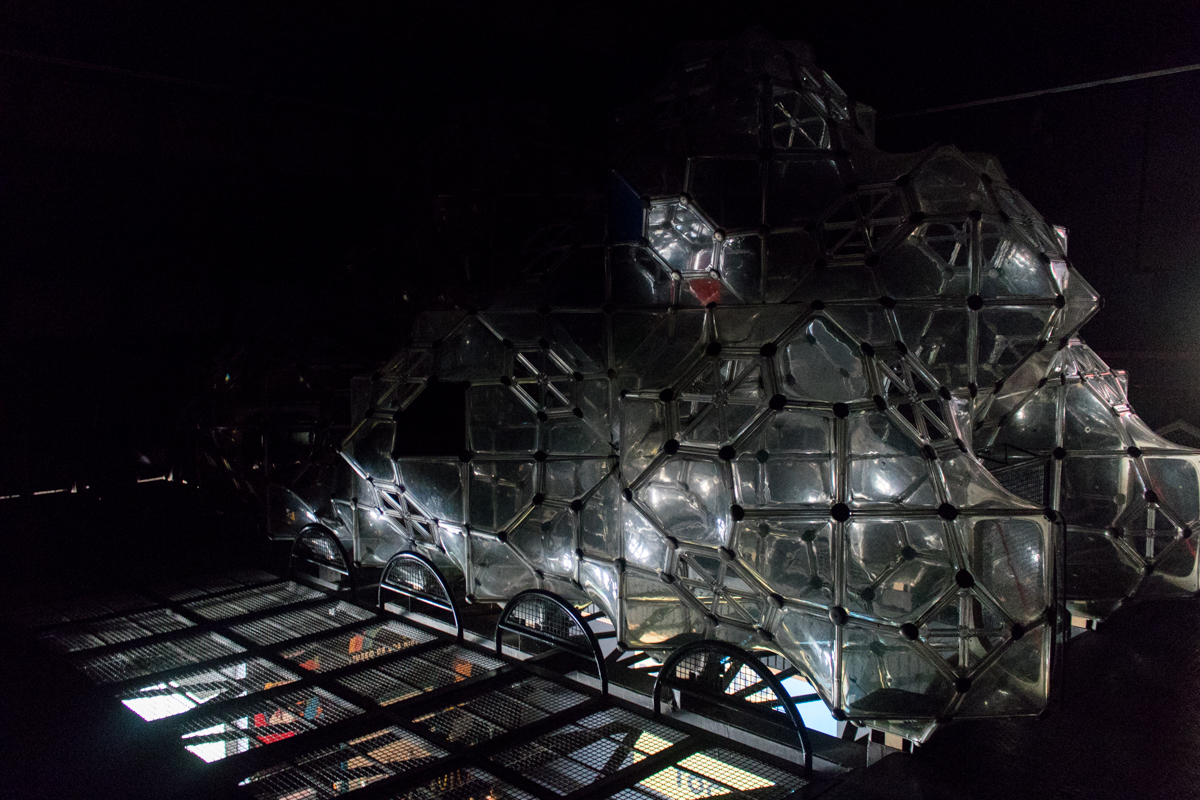
The Molecule, one of the museum’s iconic immersive experiences. Caracas, 2019. Photo: Iván Reyes.
The thunderous campaign resulted in the effective reinstallation, by state-owned power utility Corpoelec, of The Children’s Museum, which has managed to adapt and grow stronger even amidst the economic collapse and the humanitarian crisis.
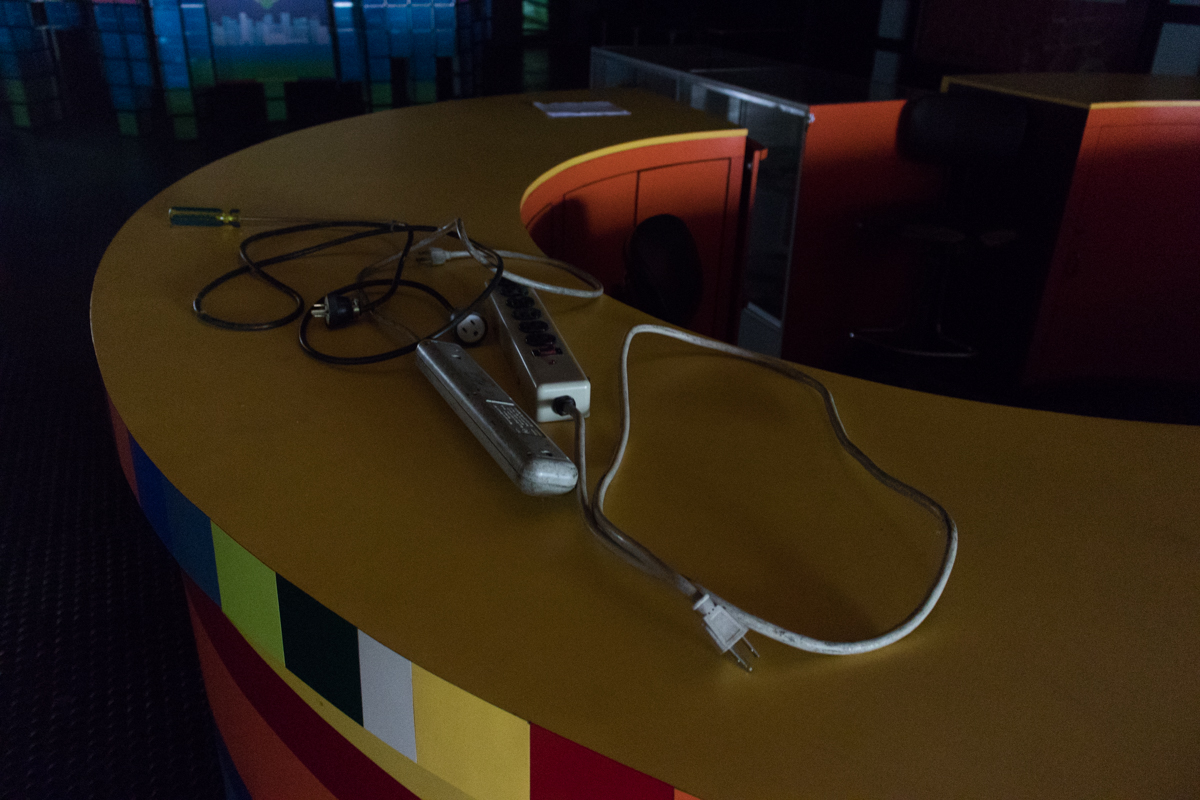
Staff members tried to fix the electrical failure with cable extensions. Caracas, 2019. Photo: Iván Reyes.
The museum was founded in 1982 after an 8 year-long planning process, and was a pioneer concept in Latin America: “The Children’s Museum in Venezuela became an example for the region. There are now 30 Children’s Museum across the continent, and they have all reached out for advisory from our board. Our concept and execution methodology was unique, even among european youth centers from the 80’s” explains Darwin Sánchez, chief of the education unit from the Children’s Museum as he makes a tour through the darkened installations, 100% of which require electricity due to its interactive nature and its black box museographic concept.
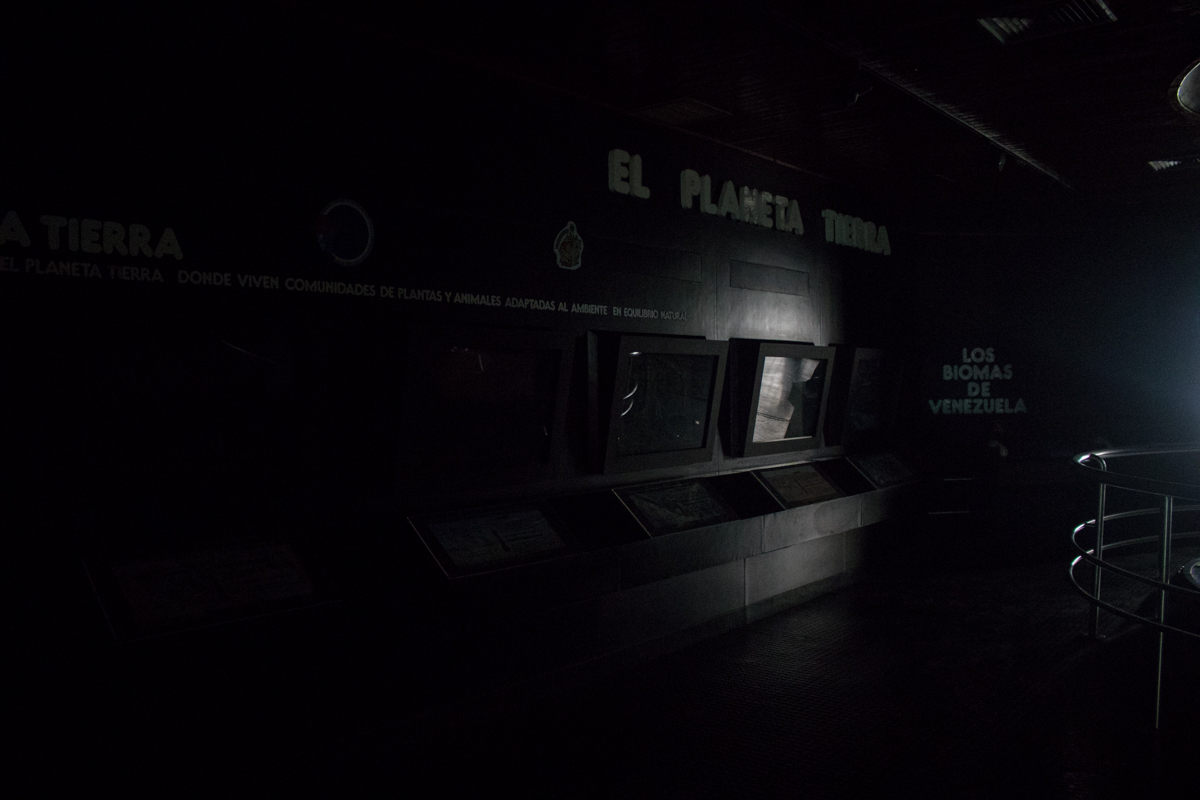
The museum’s black box museographic concept makes it 100% dependant on electricity. Caracas, 2019. Photo: Iván Reyes.
Since 2014, despite the economic collapse, which resulted in a complex humanitarian crisis, the Children’s Museum managed to update its software system, animation presentations, augmented reality department, chemistry laboratories, anatomy and digital communications sections and the space immersive exhibition wing.”We also provide schools from all over the country with detailed teaching programs and support. The museum’s concept revolves around recreational docency, without a traditional, static methodology. Interactive and ludic ways of teaching are fundamental for children to learn the magic of science and technology.” says Darwin Sánchez.
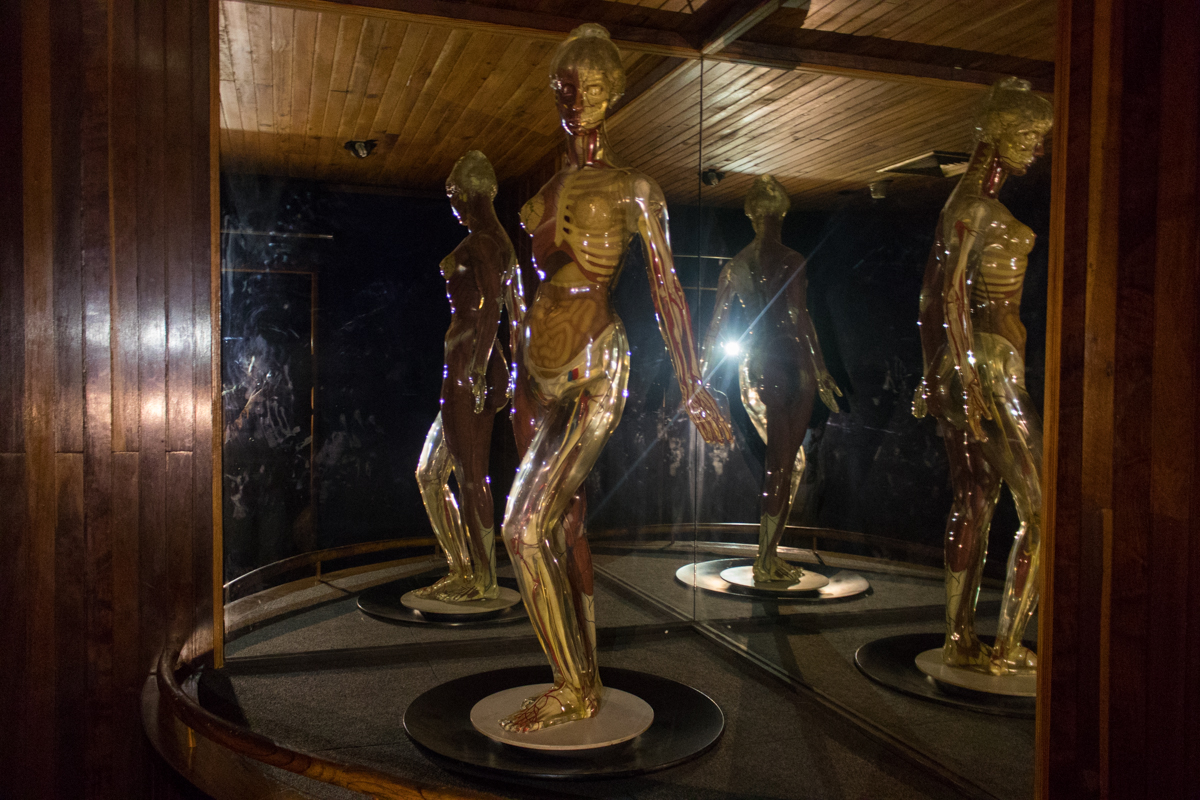
“This design was brought from Germany, and it’s aimed at explaining the female anatomy and sensations. It is one of the most iconic pieces we have from the museum’s origins.” says Darwin Sánchez. Caracas, 2019. Photo: Ivan Reyes,
Nevertheless, the Children’s Museum survival hasn’t been an easy feat. Since 2007, the state’s subsidy hasn’t reached the Children’s Museum Private Foundation, which is required by decree to all national museums, private or not. Currently, any reparation of the equipment or the installations is almost impossible to accomplish and its basic services has been affected by water and air conditioning rationings. But the museum has adapted to keep opening its doors and offer all of its services to its audience “We have water rationing twice a week, but we installed water tanks because we can’t have children in this space without the proper hygienic conditions. Families come here to enjoy themselves, we can’t show them a space affected by the crisis when we try to create a magical place,” says Darwin Sánchez without hiding his pride in the museum’s accomplishments, a technological and architectonic national jewel on its own. Still, year after year the visits are shrinking, and the team is forced to be creative to solve the daily obstacles and keep offering a wonderful reality, as the Museo de los niños old slogan says, that welcomes all.
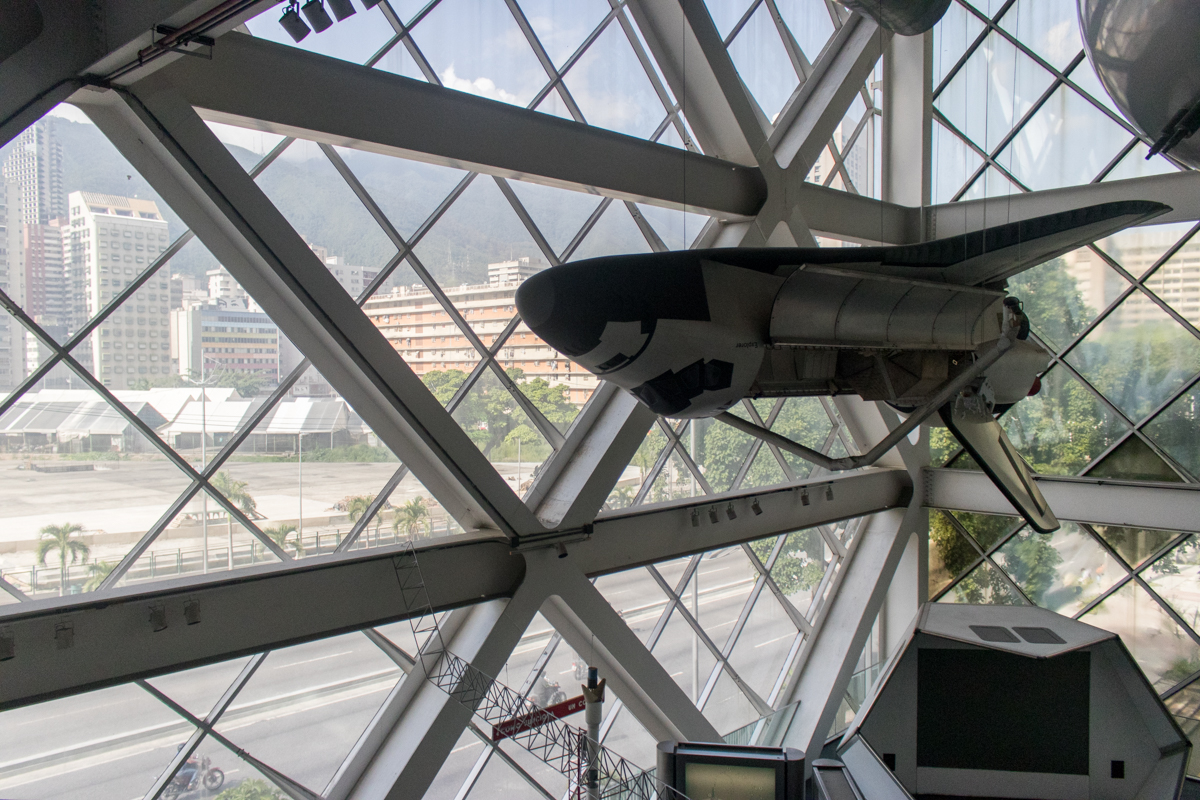
The Conquest of Space permanent exhibition wing, designed by architect Domingo Álvarez. Caracas, 2019. Photo: Iván Álvarez.
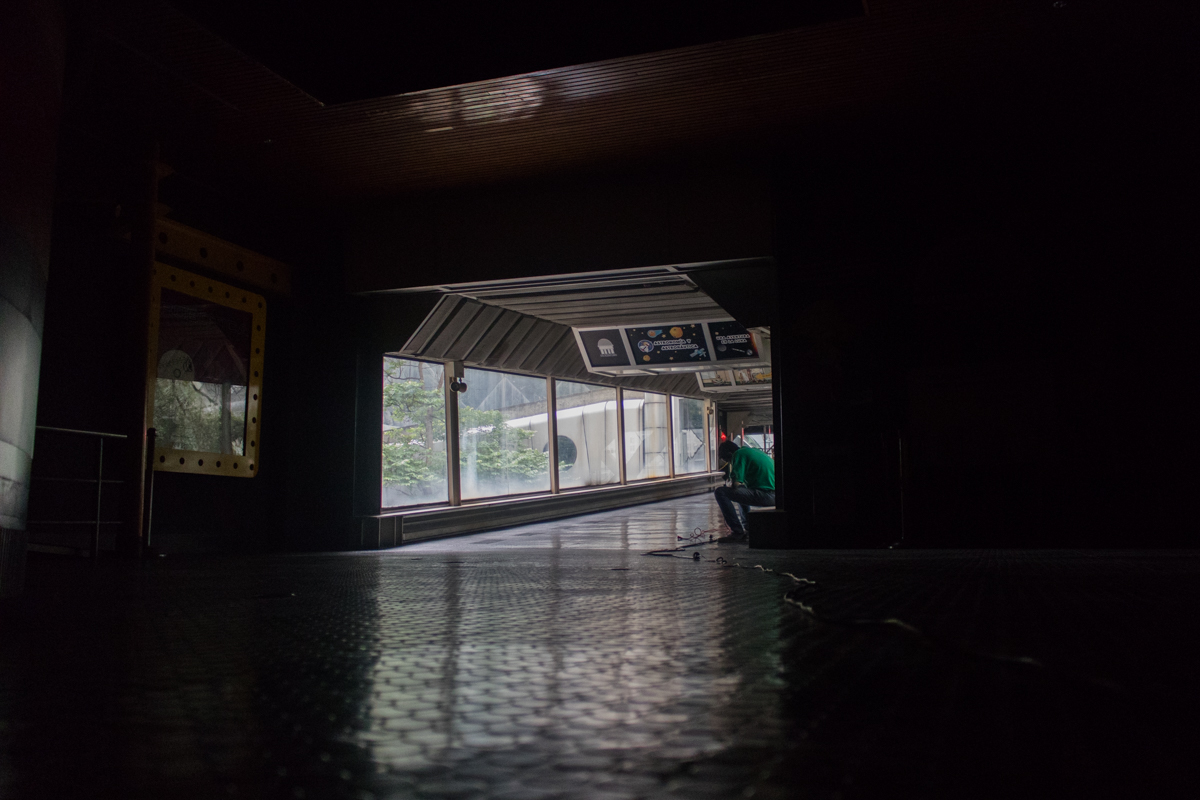
While the museum’s staff tried to fix the electrical failure, Corpoelec failed to respond for 6 days before the completion of the required work. Caracas, 2019. Photo: Iván Reyes.
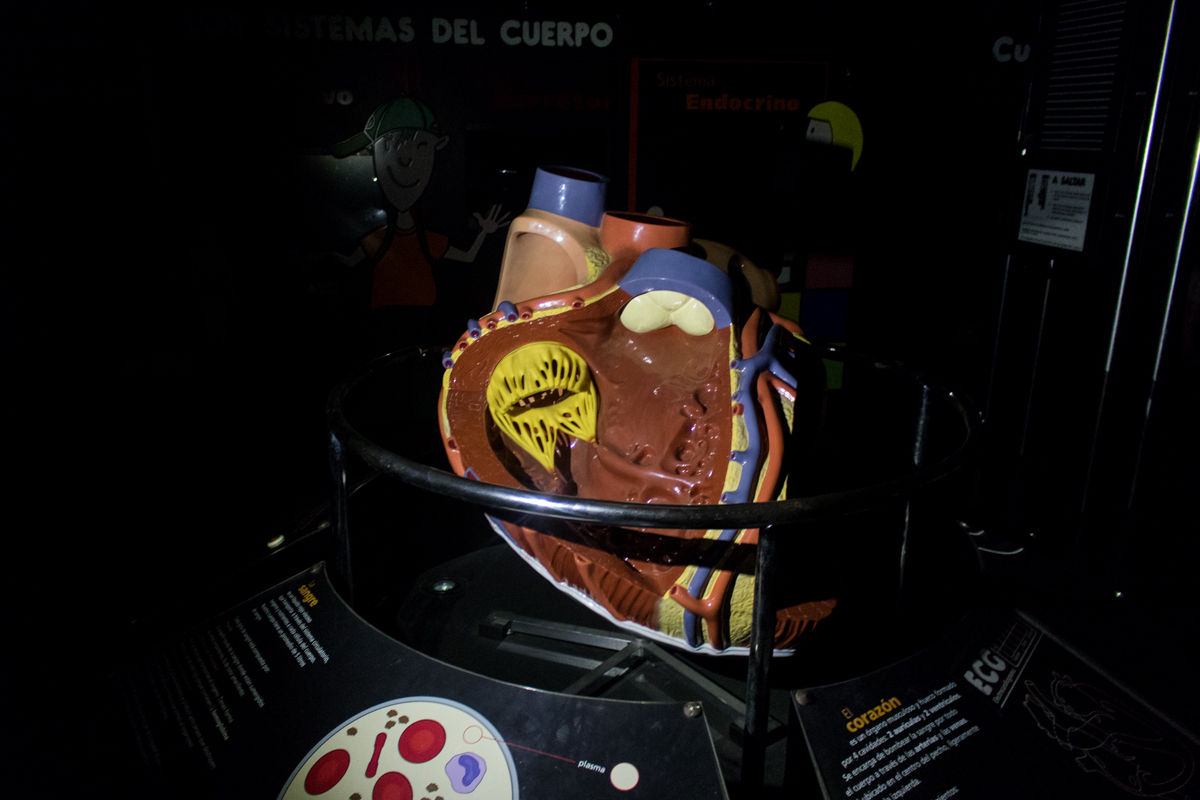
The museum’s Anatomy wing has been consistently updated since 2014. Caracas, 2019. Photo: Iván Reyes.
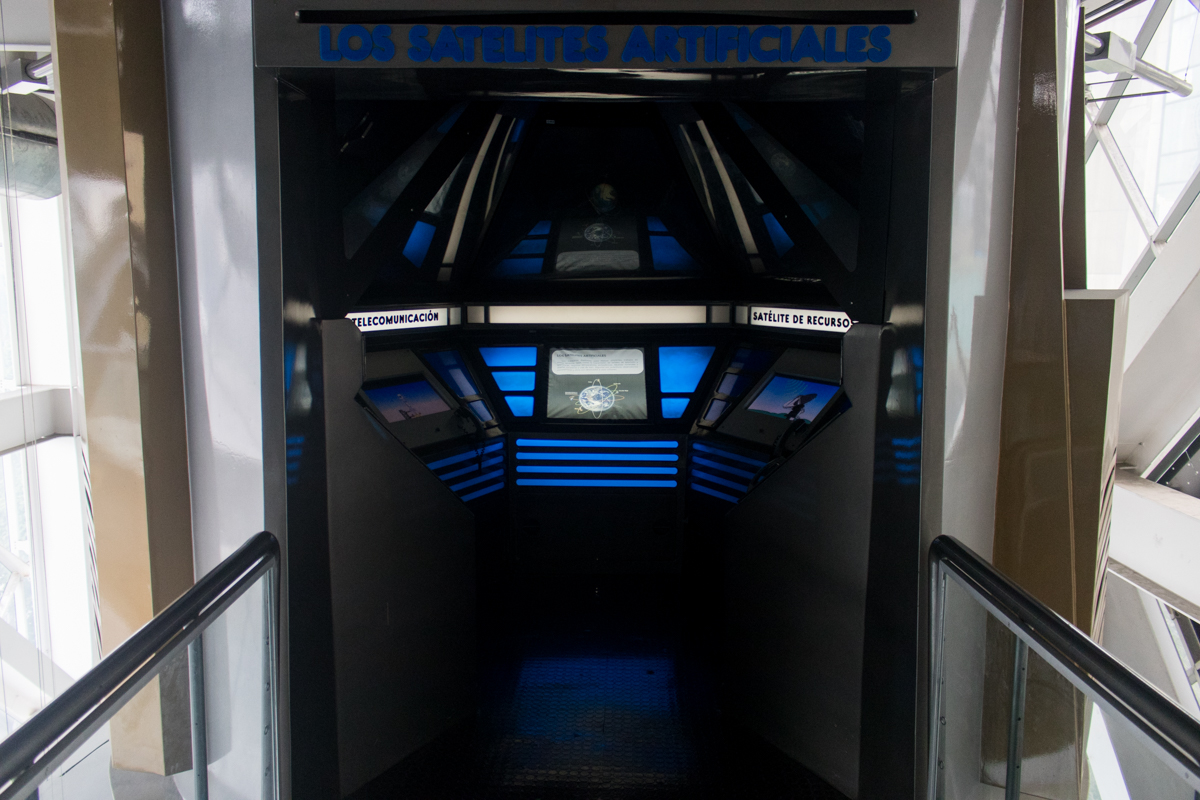
The Conquest of Space wing remained open but empty, due to the closure of the ticket offices. Caracas, 2019. Photo: Iván Reyes.
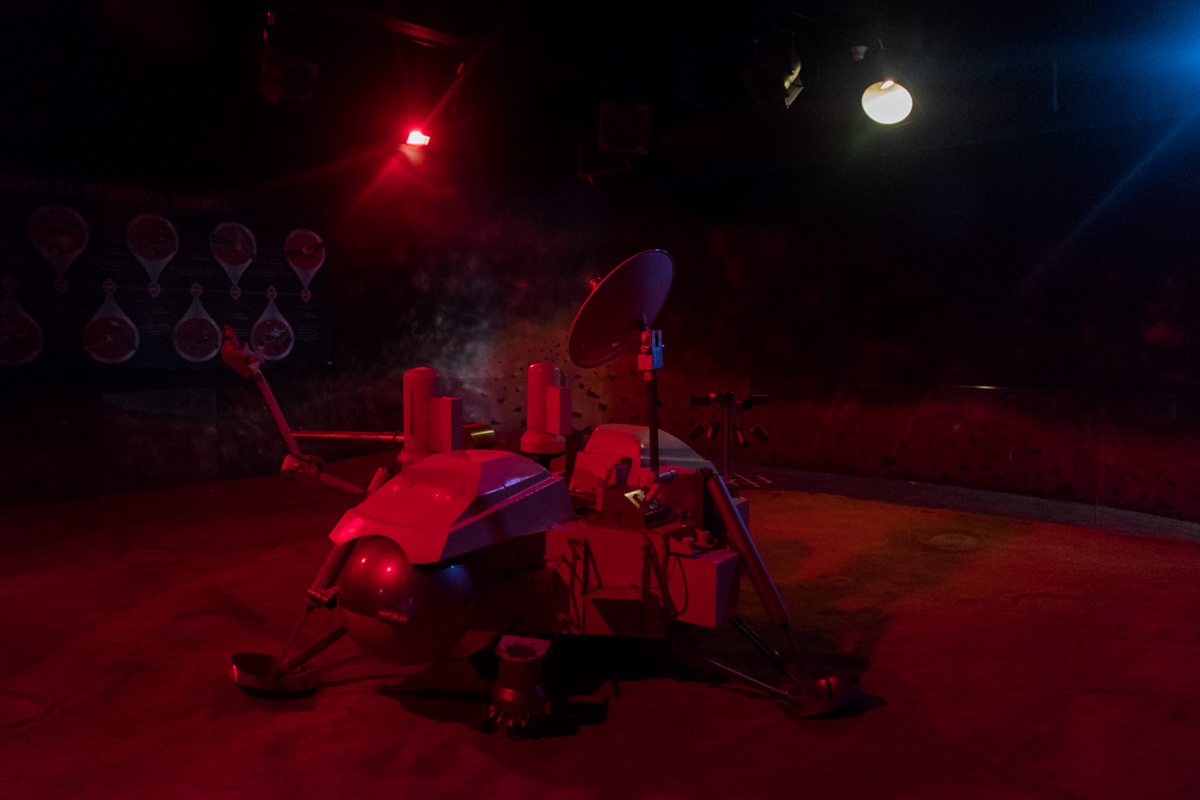
Replica of the first rover to land on the lunar surface. Caracas, 2019. Photo: Iván Reyes,
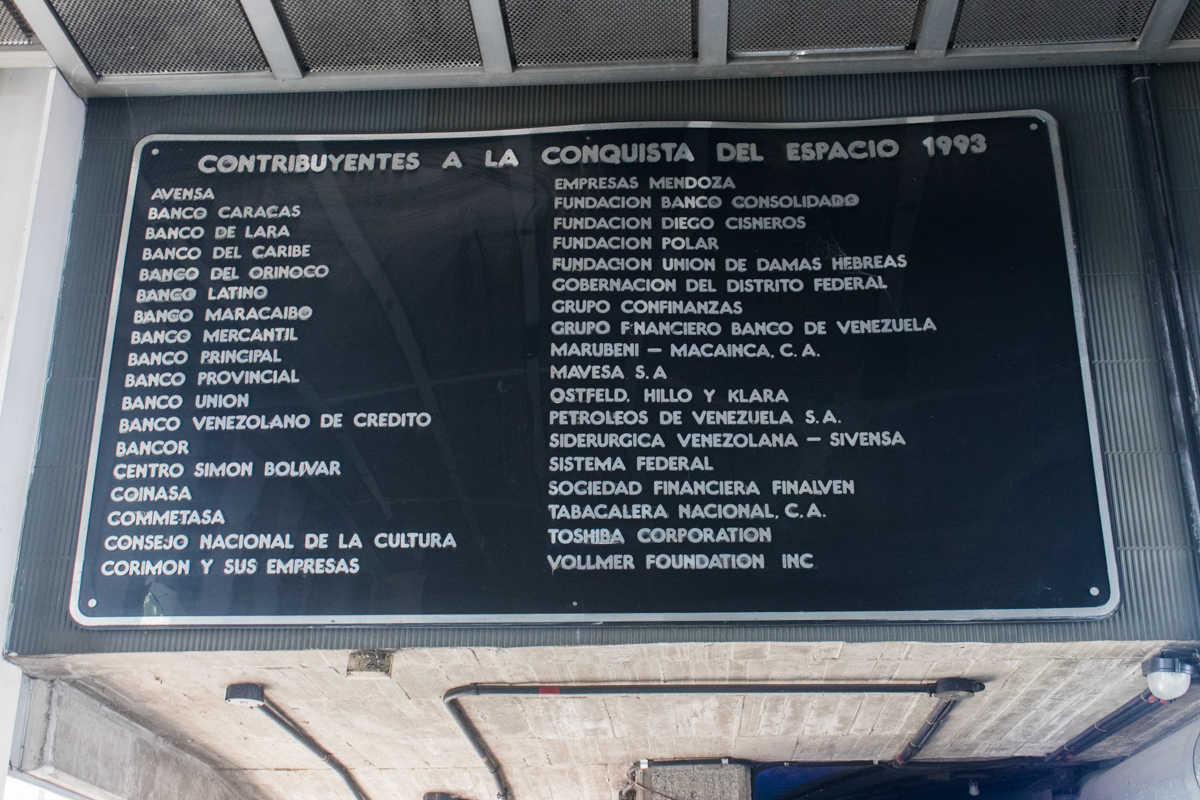
State and private contributors to The Conquest of Space permanent exhibition wing, opened in 1993. Caracas, 2019. Iván Reyes.
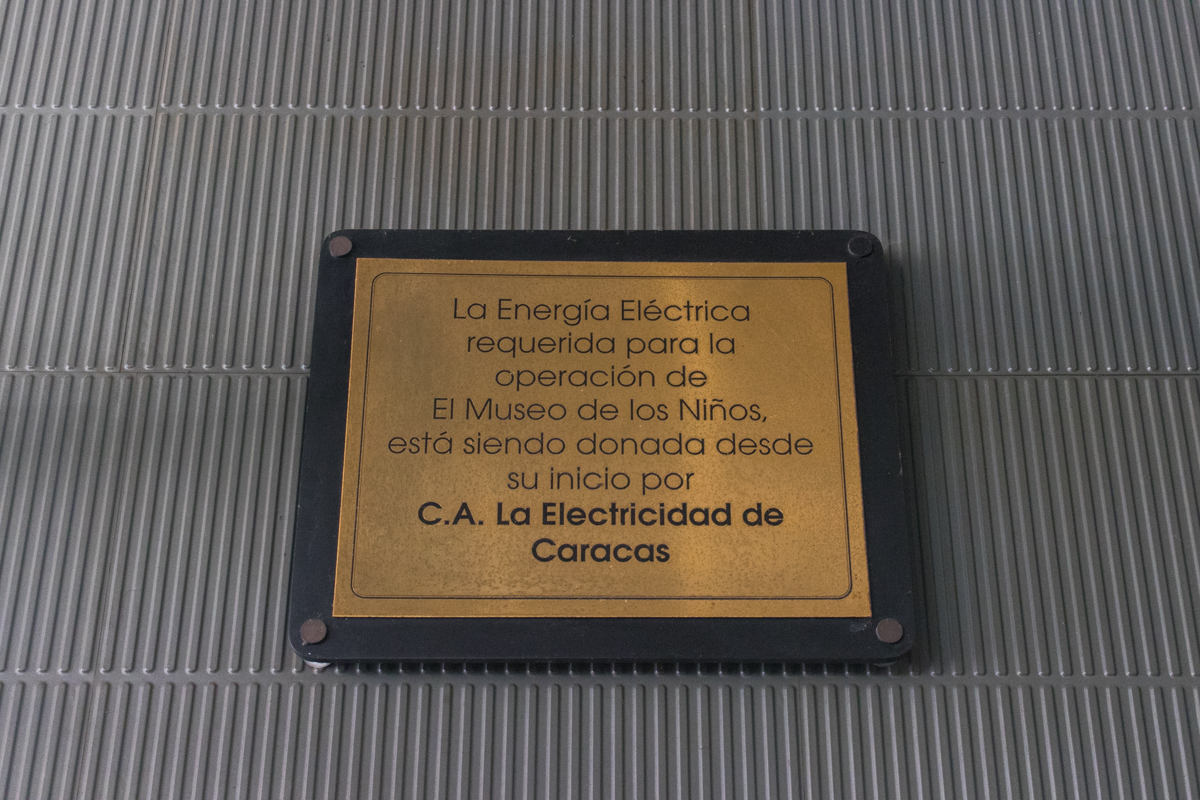
The museum’s electricity is donated by Corpoelec, through Parque Central’s electric system. Caracas, 2019. Photo: Iván Reyes.
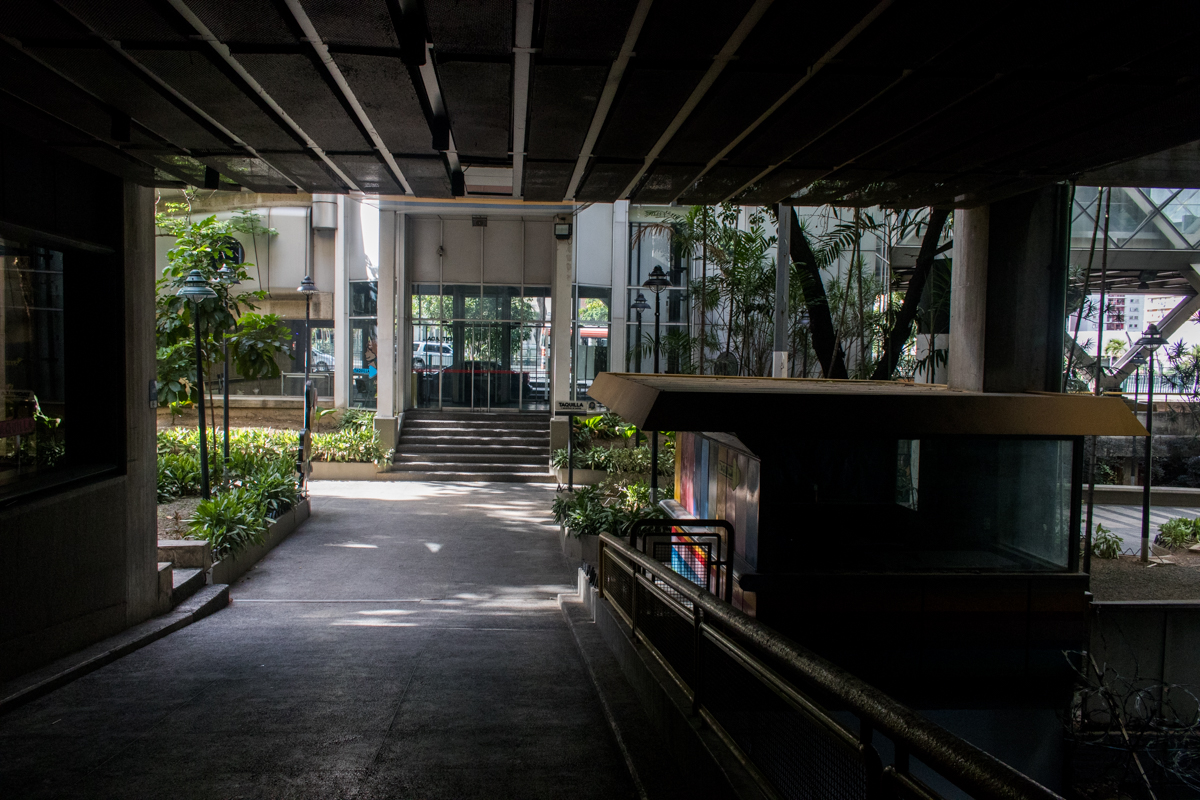
Even though El museo de los niños kept its doors closed for a week, social media has helped save a national jewel from the dark. Caracas, 2019. Photo: Iván Reyes
Caracas Chronicles is 100% reader-supported.
We’ve been able to hang on for 22 years in one of the craziest media landscapes in the world. We’ve seen different media outlets in Venezuela (and abroad) closing shop, something we’re looking to avoid at all costs. Your collaboration goes a long way in helping us weather the storm.
Donate




